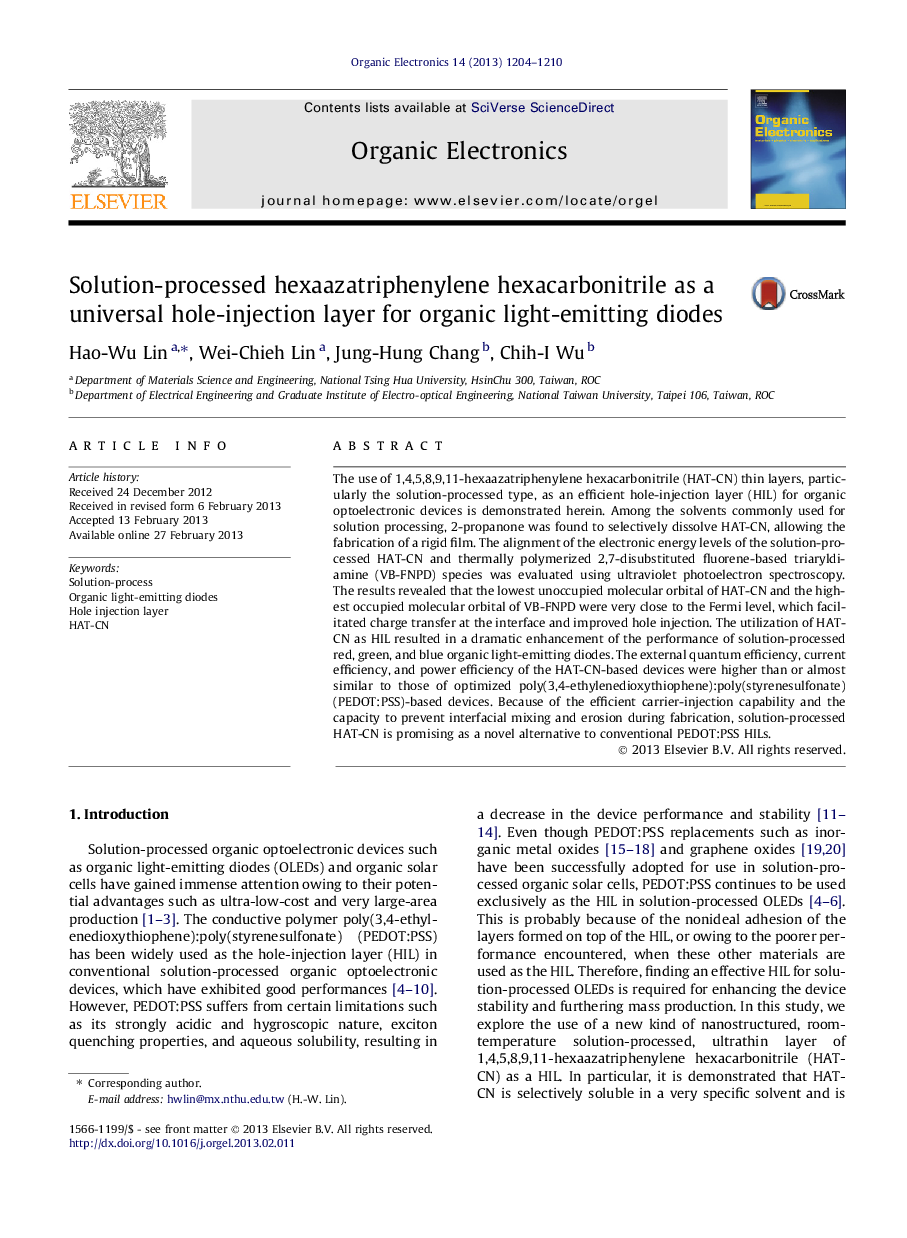| Article ID | Journal | Published Year | Pages | File Type |
|---|---|---|---|---|
| 1263921 | Organic Electronics | 2013 | 7 Pages |
The use of 1,4,5,8,9,11-hexaazatriphenylene hexacarbonitrile (HAT-CN) thin layers, particularly the solution-processed type, as an efficient hole-injection layer (HIL) for organic optoelectronic devices is demonstrated herein. Among the solvents commonly used for solution processing, 2-propanone was found to selectively dissolve HAT-CN, allowing the fabrication of a rigid film. The alignment of the electronic energy levels of the solution-processed HAT-CN and thermally polymerized 2,7-disubstituted fluorene-based triaryldiamine (VB-FNPD) species was evaluated using ultraviolet photoelectron spectroscopy. The results revealed that the lowest unoccupied molecular orbital of HAT-CN and the highest occupied molecular orbital of VB-FNPD were very close to the Fermi level, which facilitated charge transfer at the interface and improved hole injection. The utilization of HAT-CN as HIL resulted in a dramatic enhancement of the performance of solution-processed red, green, and blue organic light-emitting diodes. The external quantum efficiency, current efficiency, and power efficiency of the HAT-CN-based devices were higher than or almost similar to those of optimized poly(3,4-ethylenedioxythiophene):poly(styrenesulfonate) (PEDOT:PSS)-based devices. Because of the efficient carrier-injection capability and the capacity to prevent interfacial mixing and erosion during fabrication, solution-processed HAT-CN is promising as a novel alternative to conventional PEDOT:PSS HILs.
Graphical abstract.Figure optionsDownload full-size imageDownload as PowerPoint slideHighlights► Solution-processable HATCN as an efficient hole injection layer is demonstrated. ► Charge transfer in the HATCN/HTL interface improves hole injection. ► Utilization of HATCN effects a dramatic enhancement of the performance of RGB OLED. ► The HATCN-based devices are more efficient than optimized PEDOT:PSS devices.
